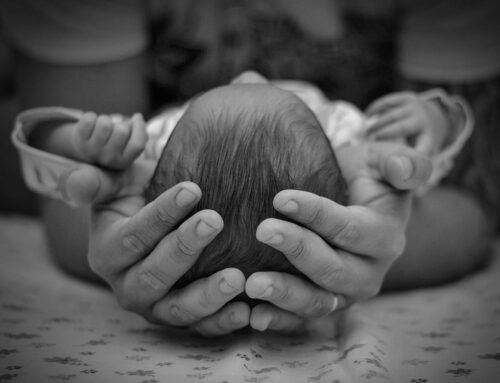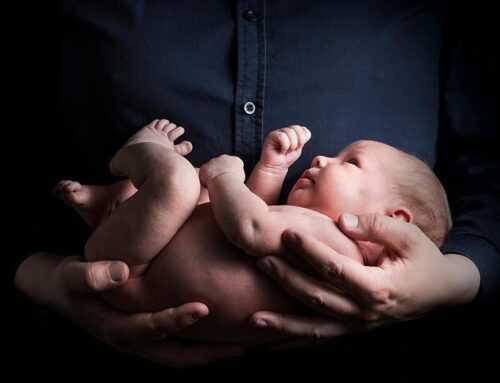1. Introduction
This guide is set to provide you with information about baby care, handle common baby problems like colic or jaundice, and assist you to understand your new baby. Many first-time parents seem to be worried about handling a newborn. It is normal to be worried. But you must also understand that countless numbers of people have handled newborns during the early days. This guide is set to provide you with information on baby care, how to handle common baby problems like colic or jaundice, and assist you to understand your newborn. Read through the sections and be prepared to refer to this guide when you need it.
Having a newborn brings a sense of joy and fulfillment to the parents, though it can also be challenging at times, especially if you’re first-time parents. The first few weeks are often the hardest as everyone, from baby to parents, is adjusting to the new routine. All parents need to understand that the mother has to rest a bit more and many new mothers feel overwhelmed with the baby being 24/7. Therefore, fathers can play a larger role in this period, perhaps taking time off from work to tend to the mother and newborn during this period. Understanding the baby’s needs is one way that parents can feel more secure about caring for their child. Reading on, you will have a fairly comprehensive understanding of newborn childcare, which may help ease the stress of learning “on the job,” so to speak.
1.1. Purpose of the Guide
Over the years, it has been recognized that the early years are a time of development and learning for children. In the earliest years of life, babies enter the world with the innermost potential and tools to learn and adapt to their personal world. Although little trains to parents in the early care responsibility of children, it is often necessary for parents – especially for mothers to receive specific training and practice to be a confident and comfortable new mother. The training, which should be mentioned should include a wide area covering all aspects of women’s health problems, “reproductive sciences”, family communication, communication with infants, 0-3 age-specific infant and childcare practices. The aim that women can recognize and adapt effectively to the changes in identity and self-esteem experienced during the course of motherhood should successively enable a woman to become a true and commodioous guide for her children. As we used to see in daily life, young girls and pregnant women direct their requests and attention towards their own mothers, older family members, or experienced women from their own environment and only occasionally to the health personnel who predicted the healthy life and pregnancy.
2. Choosing the Right Newborn Childcare
Finally, don’t be too discouraged by a waiting list. Sometimes they disappear and, in reality, the first choice programs are also the slowest to attract new parents and the first to lose older families as children outgrow the program. If all else seems equal, the components of specific programs might make a difference to you. Be sure caregivers are not prompt in turning on televisions when parents are not present and that there are multiple hands available for multiple tasks. It is especially important that there are enough interests to appeal to parents that their children also find attractive.
The achievements of a program are typically the sum of the skills and experience of the caregivers, the training and supervisory support, as well as the consistency and flexibility with policies that are facilitated by the setting and the relationship between the setting and the families the program serves. If you have more than one possible choice to make, don’t be bashful. Make an appointment to ask questions, to observe, and to ask caregivers and other parents how they feel.
Newborns usually need a warm environment. The caregiving and relationships provided are far more important than the structure of the setting. On the other hand, over the long term, the quality of interactions can be facilitated significantly by a carefully selected site and a family matching the philosophy and policies of a program.
2.1. Factors to Consider
Knowledge of the mother and general factors of newborn care is important when helping her prepare for the care of a newborn. Factors that are to be considered in newborn care include various maternal factors such as age, parity, mode of delivery (vaginal or caesarean section), complications such as antenatal and intranatal factors like antenatal visits, health education received during the antenatal period, counseling received before labor and during hospitalization, intranatal care including care during labor, and factors at birth like sex, gestational age, weight, and condition at birth and factors postnatally after discharge are of significant importance. With proper knowledge of these factors, it is feasible for nurses to plan and provide care accordingly. Distinguishing the needs of different individuals and arranging for comprehensive care helps ensure that the mother and baby are able to adjust and recover together. Prompt communication between the obstetrical, maternal, and pediatric departments can help ensure that mothers and infants receive the medical care and attention they need.
The arrival of a baby can be a delight, but at the same time, it raises new responsibilities and newborn childcare can become an overwhelming task. However, with proper planning, safe and healthy methods of care, and a step-by-step approach to childcare, rearing a baby can be an enjoyable and fulfilling experience. It is important for all family members to keep in mind that the care of an infant is the responsibility of all. Adaptation to parenthood by both the father and mother is important to ensure proper care of a newborn.
2.2. Types of Newborn Childcare Services
The transition from the hospital to home with a new baby can be anxiety-provoking and even overwhelming. The availability of reliable, high-quality home nursing services is, therefore, especially valuable due to the relief it provides to parents who might feel both physically and emotionally exhausted due to lack of sleep, as well as the comforting influence it brings to the lives of the parents who are often very concerned about the health of the mother and child. With highly skilled and experienced postpartum nurses on hand, working closely with the family and caregivers, these domestic case care partners help make the transition from the hospital to the comfort of the home a more enjoyable one.
Families have a variety of different childcare needs and priorities following the birth of a baby. Some families require the support of a childcare agency, which specializes in maternal and newborn care for a period of time, particularly following the early postpartum period. These agencies can provide families with residential maternity nurses (often known as ‘maternity nannies’) or night nurses, depending on the family’s needs.
3. Essential Newborn Care Practices
– Early initiation of breastfeeding, ideally within the first hour of birth. – Exclusive breastfeeding: WHO recommends that babies be exclusively breastfed for the first six months of life, meaning they receive only breast milk and no other liquids or solids. Exclusive breastfeeding helps to protect babies from respiratory and gastrointestinal infections, and it also stimulates mothers’ milk production and helps them lose pregnancy weight. When breastfeeding is not possible, donor breast milk or formula milk may be used. – Rooming in with mother, which can help to support breastfeeding. – Delay of baby’s first bath, as vernix protects the baby’s skin just after delivery.
Essential newborn care practices are a series of straightforward, evidence-based practices that can have a big impact on the baby, mainly with regard to healthy development and avoiding infections. Essential newborn care practices include:
3.1. Feeding and Nutrition
In most cases, infants should be fed only breast milk or formula until 4 to 6 months of age. At this time, complementary foods can be introduced. Consumer Reports explains how to choose infant formula and recommends brands.
Nutrition is vital to the healthy development of the newborn. Most parents today choose to bottle-feed from the moment of birth, even though there is little necessary reason not to breastfeed. Breastfeeding allows important immune defense cells to be transferred to the newborn, as well as important nutritional elements produced by the mother. Colostrum is the thin, yellow first milk the mother of newborns produces and is very high in important nutrients for the newborn. Breastfeeding also benefits the mother, engendering weight loss and aiding with recovery from pregnancy. Some companies now provide breast pumps and other tools to allow working mothers to maintain breastfeeding. However, there are times when it is impossible or harmful to breastfeed. This is particularly true if the mother is an IV drug user or is infected with the HIV virus, as these diseases can be transmitted to the newborn through breastfeeding.
3.2. Sleeping Patterns
When caring for a baby or at night, it is important for the baby to nap in the right place, at the right time of day. The best sleep environment is one that is free of any object that might be a suffocation hazard and does not promote Sudden Infant Death Syndrome (SIDS), including blankets, stuffed animals, and toys. Sleeping in a cradle, in a hammock, or in the mother’s bed (especially when breastfeeding) are some of the most recommended options. The baby could also nap in a crib when getting used to it for the nights if the mother plans for him to sleep in his own bed.
Newborns have a very limited capacity for staying awake, so they often fall asleep at the beginning of each feeding. It is common for newborns to wake up several times at night, regardless of the type of feeding. During this stage, it is common for the mother to have a hard time recognizing her baby’s sleep rhythms since her hormones are still peaked during the second or third day after giving birth and she may feel exhausted, as will her baby.
A baby’s sleeping patterns are one of the topics that most parents ask about during the first months of life. The amount of sleep a baby needs depends on his age and the individual, but on average, we can say that newborns sleep approximately 16-18 hours a day, waking every one to three hours.
3.3. Hygiene and Diapering
In the case of hair care, after about 20 days, warm oil should be massaged with fingertips onto the scalp. Moisten the entire scalp with fingertips and wrap a warm towel securely around the baby’s head. Hold at the scalp and apply firm pressure to undisturbed the lands. Toilet training starts, especially in baby girls, after the passage of 1.5 years. Caregivers need to instruct the baby on how to clean themselves after passing bowel motion or urination. Parents should teach children the importance of cleaning from front to back. Hence, teaching childcare to children is also important, especially when they go to daycare facilities. Keep the diaper area clean and dry, as frequent rashes may be encountered. When diapering, follow the proper method and techniques. Wipe the area from the genitals to the back, not in reverse order.
Keeping the baby clean is an integral aspect of childcare. Maintaining proper hygiene in babies helps in avoiding various health issues. Caregivers need to change the baby’s clothes and diapers, keep the baby clean by giving regular massages and baths. Regular changing of clothes, especially after they become soiled, keeps the baby free from skin rashes and infections. Parents could always use soft wet wipes to clean the baby before using fresh diapers. Wet wipes are used to clean the baby’s genitals after birth. In the case of lotion, always use it from the body to the fingertips, not in reverse order. Baby soap and shampoo could be used twice a week, followed by gentle massages and application of baby lotion. After that, the baby should be dressed in clean clothes. Keep the baby’s clothes clean and dry. Always use a thoroughly dried towel and make sure the baby is kept warm.
4. Safety Measures in Newborn Childcare
If the baby is a girl, strict hygiene is to be observed during dressing and diaper changes. The baby girl’s pudenda should always be wiped from front to back to avoid urinary infections. The pudenda and the skin folds in fat babies should be sparing. The baby’s gums should be cleaned within a few days after birth. This is done by dipping the end of a clean washcloth in cool saltwater and then wrapping the cloth around an index finger. This loosely wrapped cloth is in turn swathed around the index finger and all around the gum area where milk deposits are expected to be found. Only distilled or cooled dumped boiled water is used to clean the baby’s teeth. Cotton buds must never be used on a baby’s teeth.
This is a very important part of newborn childcare. A newborn baby is very delicate and milk. The room in which the baby sleeps should be airy but devoid of heavy drafts. Take care to remove the entire clutter such as cigar cartons, cigarette piles, ashtrays, and the like from the baby’s room. There should be no possibility of any fire hazard such as a short circuit in the room in which the newborn baby sleeps. For these reasons, the cradle should be placed away from switches and electrical power points. Newborn babies should never be paid out of their cradles or carried near fires in the kitchen.
4.1. Safe Sleep Practices
Before placing the infant in the cot, check to be sure that the area is cleared of any dangerous objects that could be a choking hazard. Be sure that this area is clutter-free and free from cords, wires, and blanket risk factors. Use a firm mattress without a pillow. Pillows do not support newborns, and the softness of the object can pose potential suffocation hazards. Use a baby-friendly sleep mat manufactured specifically for babies. Ensure the baby’s crib is sturdy and solid, and be sure it is not an older crib that has distance bars far enough apart to allow an arm, leg, or head to become trapped. Additionally, it is essential that the baby cot is not placed next to the window. Morning light seeping in can disrupt a baby’s sleeping pattern and also create suffocation hazards from dark shadows.
It is primarily important that the adult caregiver stays as calm as possible when placing the newborn in the cot. Often the recommendation is to place the baby down on the back, being sure that the baby is placed completely with centered weight on the hind part of the body. The baby should be placed so their head is facing one side. This helps them from burying their face in the mattress. If you come back and find the baby on the stomach, do not turn the baby over as you can cause more harm than good by choosing to roll the baby back onto their back. Instead, turn the baby over and off of the mattress altogether and place the baby back onto the back of the head in the “head-face turn” position as indicated.
4.2. Childproofing the Environment
The baby’s crawling and first steps are near and your apartment should become a safe place to satisfy your child’s curiosity. You will spend most of the time at home and coping with inconvenient locks will drive you mad if you wait until the last bell to replace those that are only supposed to make the access to the dangerous places difficult. A quiet and settled atmosphere is important, as the child should be careful and open, learning in his environment without banging his elbows or head.
When arranging the house environment in which you will be taking care of the newborn, you need to remember: the most convenient for you is usually the most dangerous for the baby. The newborn’s only way to explore the world is to put the things he is able to handle into his mouth. The baby may swallow or choke on even small objects. A few preventive measures, especially with the earliest improvements of attended skills, and it is not crucial to lock all the doors and windows for the small intruder to be safe. The main principle of child-proofing the house should be consistent return from top to bottom: the first thing we approach in any room should be the last barrier the baby passes through.
5. Conclusion
In conclusion, the above information will never equal experience and common sense or the advice offered by someone with greater knowledge or professional expertise. While you look for advice on subjects such as feedings, vaccinations, and sleep, you are the person who knows your baby best, and keep in mind that what works best is often the most simple.
Parenthood can be defined as one of the most rewarding and challenging experiences in an individual’s life. The challenges, however, can be reduced by educating oneself about the matter and reading as much as possible about their baby’s day-to-day needs. Understanding what can and cannot be done within the newborn’s daily routine is another important factor. Common sense is your best guide, but you must also be guided by a practical knowledge of what babies need in order to thrive. Regardless of how baby formula is improved, it will never equal breast milk for a baby’s complete nourishment (antibodies, hormones, nutrients, etc.).
5.1. Final Thoughts and Resources
The women’s movement facilitated liberation of place, self and consciousness from specific prescribed gender hierarchies and restrictions. Increasing and personalizing life’s opportunities has resulted. Personal creativity and choice, encouraged rather than prohibited by race religion or culture, result in a potent prescription for reaching personal goals. Peers and others in society judge parents using post labor labor lenses and question the competence of those who seemingly falter. Coaches who provide prenatal classes must consider the influence of this primer and society’s expectations for successful parenting, a good enough mother, and the perfect mother on the childbirth joyous reality, and low- and high-risk postpartum experiences. The Great Expectations classes at Baltimore County General Hospital awakened thousands of people to the awaiting reality and wonder of birthing. Pride impressed individuals and brought them wisdom, confidence, self-esteem, and caring. This new-found sense came in day-to-day participatory living experienced through the camaraderie, validation, and reinforcement received in our classrooms. Revitalized and reworked personal abilities formerly hidden below the cream of everyday life, became a special goal for each parent-to-be. The student’s five S’s create a synergy forming a network to offer substantive and effective help, hope, and humor to many positive personal life events. The class is alive and constantly creating.
The transition from pregnancy to parenthood is a journey of substantial change involving redefinition of self and shifts in relationships with companion animals, family, and friends. Childbirth educators can facilitate the initiation of this change during the prenatal period. We provided nearly 50 hours of education in which people learned how to plan for hospital-based childbirth and postpartum experiences. The lineage of childbirth has shifted with increasing use of personal choice and decreasing experience of tradition and ritual. Secluding or retiring from the tribe for weeks or months postpartum, the assignment of people, particularly women, to attend the clinical and emotional needs of new mothers and babies has longstanding roots. Postpartum care and assistance draw from an ancient heritage and are as essential as prenatal care and informed healthcare experiences. Becoming a mother is a rite of passage widely supported by history, culture, ceremonies, and traditions special for women.
Excited to uncover more? Visit us for further insights!
References:
Mosley, Della V., et al. “Critical consciousness of anti-Black racism: A practical model to prevent and resist racial trauma.” Journal of Counseling Psychology 68.1 (2021): 1. nih.gov
Radford, J. “History of women’s liberation movements in Britain: A reflective personal history.” Stirring It, 2023. [HTML]
Feeley, C., Cooper, M., and Burns, E. “A systematic meta‐thematic synthesis to examine the views and experiences of women following water immersion during labour and waterbirth.” Journal of Advanced Nursing, 2021. wiley.com
McNeil-Young, Victoria A., et al. “Storying survival: An approach to radical healing for the Black community.” Journal of Counseling Psychology 70.3 (2023): 276. [HTML]
Newman, M. “Learning, education and social action.” Understanding adult education and training, 2020. [HTML]
Neville, Helen A., et al. “The public psychology for liberation training model: A call to transform the discipline.” American Psychologist 76.8 (2021): 1248. researchgate.net
Lykes, M. B. and Távara, G. “Feminist participatory action research: Coconstructing liberation psychological praxis through dialogic relationality and critical reflexivity..” 2020. [HTML]
MacMaster, N. “Burning the veil: The Algerian war and the ’emancipation’of Muslim women, 1954–62.” 2020. oapen.org
Chase, M. ” Hands Off Korea!: Women’s Internationalist Solidarity and Peace Activism in Early Cold War Cuba.” Journal of Women’s History, 2020. [HTML]
Yeung, H. ““Nah You’re My Sisters for Real!”: Utilizing Instagram and Mobile Phones to Facilitate Feminist Conversations with Asian Migrant Women in Aotearoa.” Facilitating community research for social change, 2022. [HTML]






